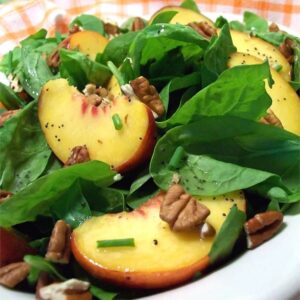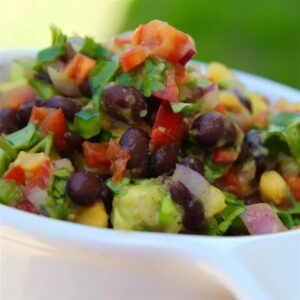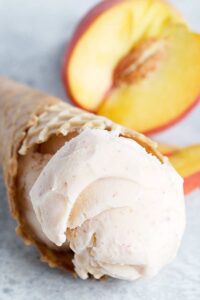Time for Fresh Peaches
go.ncsu.edu/readext?949169
en Español / em Português
El inglés es el idioma de control de esta página. En la medida en que haya algún conflicto entre la traducción al inglés y la traducción, el inglés prevalece.
Al hacer clic en el enlace de traducción se activa un servicio de traducción gratuito para convertir la página al español. Al igual que con cualquier traducción por Internet, la conversión no es sensible al contexto y puede que no traduzca el texto en su significado original. NC State Extension no garantiza la exactitud del texto traducido. Por favor, tenga en cuenta que algunas aplicaciones y/o servicios pueden no funcionar como se espera cuando se traducen.
Português
Inglês é o idioma de controle desta página. Na medida que haja algum conflito entre o texto original em Inglês e a tradução, o Inglês prevalece.
Ao clicar no link de tradução, um serviço gratuito de tradução será ativado para converter a página para o Português. Como em qualquer tradução pela internet, a conversão não é sensivel ao contexto e pode não ocorrer a tradução para o significado orginal. O serviço de Extensão da Carolina do Norte (NC State Extension) não garante a exatidão do texto traduzido. Por favor, observe que algumas funções ou serviços podem não funcionar como esperado após a tradução.
English
English is the controlling language of this page. To the extent there is any conflict between the English text and the translation, English controls.
Clicking on the translation link activates a free translation service to convert the page to Spanish. As with any Internet translation, the conversion is not context-sensitive and may not translate the text to its original meaning. NC State Extension does not guarantee the accuracy of the translated text. Please note that some applications and/or services may not function as expected when translated.
Collapse ▲North Carolina ranks approximately ninth in peach production. The majority of peaches are grown in the Sandhills area but, we do have some harvesting now in Beaufort County. Almost all the North Carolina peaches are grown in order to be sold at roadside markets and pick-your-own farms—directly to consumers. These tree-ripened peaches are usually sweeter. There are many peach varieties including: Rich May, Derby, Winblo, Contender, Sweet Sue, Big Red, and Red Haven. NC peaches are available from the end of May through August.
Did You Know?
- Even though peaches originated from China, the United States is the world’s leading grower of peaches.
- Peaches are classified as a stone fruit, meaning that they contain a single large seed or stone surrounded by juicy flesh. Other common stone fruits include cherries and plums.
- Nectarines are a type of “fuzz less” peach. Nectarines are smaller, with a smaller and flatter stone, and have a smooth outer skin. Nectarines are also sweeter in taste than peaches.
Don’t be fooled by a peach’s small size and delicate skin. Just one medium peach has about 11% of the vitamin C you need each day. This nutrient helps your body heal wounds and keeps your immune system going strong. It also helps get rid of “free radicals” — chemicals that have been linked to cancer because they can damage your cells. An antioxidant called beta-carotene gives peaches their pretty golden-orange color. When you eat it, your body turns it into vitamin A, which is key for healthy vision. It also helps keep other parts of your body, like your immune system, working like it should.
One medium peach can give you as much as 6% to 9% of the fiber your body needs each day. High-fiber foods can protect you from health problems like diabetes, heart disease, and colorectal cancer. But the benefit you may notice the most happens in the bathroom: Getting enough fiber can help prevent constipation.
Clocking in at fewer than 60 calories, peaches have no saturated fats, cholesterol, or sodium. And more than 85% of a peach is water. Plus, foods high in fiber are more filling. When you eat them, it takes you longer to feel hungry again. Nuts and seeds are the best-known sources of vitamin E, but peaches are ripe with it, too. This antioxidant is important for many of your body’s cells. It also keeps your immune system healthy and helps widen blood vessels to keep blood from clotting inside. Potassium can help balance out the effects of a diet high in salt. It may also lower your blood pressure, along with your chances of kidney stones and bone loss. You need about 4,700 milligrams of potassium every day, and it’s far better to get it from food than a supplement. One small peach has 247 milligrams of potassium, and one medium peach can give you as much as 285 milligrams of potassium.
If you have stomach trouble, a snack of canned peaches may be a good idea. They have a soft texture, are lower in fiber than fresh fruit, and are easy to digest. As part of what’s called a “gastrointestinal soft diet,” canned peaches can help soothe an upset stomach and ease diarrhea and gas.
As sweet as they are, peaches may help keep your teeth healthy because they have fluoride. This mineral, which you find in toothpaste, is also in some foods, including peaches. It helps get rid of the germs in your mouth that can cause cavities.
Choose a Perfect Peach
The sweeter the smell, the riper the peach. (They’re members of the rose family, after all.) They’re ready to eat when they give to the gentle pressure of your finger. Firm peaches can sit on your counter for a few days to ripen, but once they’re ready, pop them into your fridge. Leaving them out once they are ripe will lessen their vitamin C.
Yes, you can eat a fresh peach out of hand, but why stop there? You can also bake, grill, broil, or sauté this mellow stone fruit. Add muddled (gently smashed) peach slices to your iced tea or lemonade or throw some into a blender with yogurt or milk to make a healthy smoothie. Spicy peach salsa also makes a sweetly healthy summer topping for fish or chicken.
Peaches have a lot of nutrients in their skin. (Just make sure you rinse them before you eat them, to get rid of any dirt.) If you’re not a fan of the fuzzy texture, go for a nectarine. They’re actually peaches at heart. Just one different gene gives them a smooth peel.
Healthy Serving Ideas
- Blend fresh or frozen peaches with low fat milk, 100% orange juice, and ice.
- Combine peaches, low fat yogurt, and granola for a healthy snack
- Add fresh peaches to cereal and low fat milk or oatmeal
- Canned peaches are a good alternative to fresh. Choose canned peaches packed in natural juice or light syrup.
- Add sliced peaches or nectarines and nuts to a green salad for a healthy lunch or dinner.
- Make a tasty topping for your pancakes. Just heat canned peaches in natural juice or light syrup in the microwave. Add a dash of cinnamon.
- Mix diced peaches with low fat yogurt and 100% orange juice. Put mixture in paper cups and insert popsicle sticks. Freeze until solid for a frozen peach pop
Spinach Salad with Peaches and Pecans
This peach salad with baby spinach and roasted pecans is perfect for summer.
- 3/4 cup pecans
- 2ripe peaches
- 4 cups baby spinach, rinsed and dried
- 1/4 cup poppyseed salad dressing (see attached recipe)
Preheat the oven to 350 degrees F (175 degrees C). Arrange pecans on a single layer on a baking sheet and roast in preheated oven until they just begin to darken, about 7 to 10 minutes. Remove from oven and set aside. Peel peaches (if desired) and slice into bite-sized segments. Combine peaches, spinach, and pecans in a large bowl. Just before eating toss with dressing until evenly coated.
Nutrition Facts per serving calories 253, total fat 23g, saturated fat 2g, cholesterol 5mg, sodium 132mg, total carbohydrate 11g, dietary fiber 3g, total sugars 7g, protein 3g, vitamin C 30mg, calcium 51mg, iron 1mg and potassium 275mg
Poppyseed Dressing
This poppyseed dressing is great for a fresh fruit salad. Very tangy and sweet.
- 1/2 cup white vinegar
- 1/3 cup white sugar
- 1 teaspoon grated onion
- 1 teaspoon ground dry mustard
- 1 teaspoon salt
- 1 cup vegetable oil
- 1 tablespoon poppy seed
Place vinegar, sugar, onion, mustard, and salt into a blender or food processor; blend for 20 seconds. With the blender running, gradually add oil in a thin steady stream until combined. Transfer dressing to a bowl and stir in poppy seeds.
Nutrition Facts per serving: calories 161, total fat 16g, saturated fat 3g, sodium 166mg, total carbohydrate 5g, dietary fiber 0g, total sugars 5g, calcium 9mg, and potassium 5mg
Black Bean Salad with Peaches
This is the perfect black bean salad for any casual gathering. Especially good for a picnic or the ideal starter to a full-blown dinner party.
- 2 fresh peaches, finely chopped
- 1 red bell pepper, finely chopped
- 1/4 red onion, finely diced
- 1 jalapeno pepper, seeded and diced
- 1 (15.5 ounce) can of black beans, rinsed and drained
- 1/2 cup finely chopped fresh cilantro
- 1/2 teaspoon ground cumin
- salt to taste
- 1 avocado – peeled, pitted and chopped
- 2 tablespoons lime juice
- 2 teaspoons extra-virgin olive oil
Mix peaches, red bell pepper, onion, and jalapeno pepper together in a bowl; gently fold in black beans and cilantro. Season with cumin and sea salt. Fold in avocado and drizzle salad with lime juice and olive oil. Let stand for 5 to 10 minutes before serving
Nutrition Facts per serving: calories 231, total fat 10g, saturated fat 2g, sodium 512mg, total carbohydrate 29g, dietary fiber 12g, total sugars 5g, protein 8g, vitamin C 73mg, calcium 62mg, iron 4mg and potassium 723mg.
Every now and then I offer and indulgent desert and this is a Summer Time favorite!
Homemade Peach Ice Cream Yield
10 servings
This delicious peach ice cream tastes just like eating a fresh peach. Uses no eggs and no cooking is required.
- 1 to 1 1/2 cups fresh peach puree, from about 4 large or 7 small peaches, peeled or not, as you like
- 1 1/2 cups heavy whipping cream
- 1 cup half and half cream, 10% bf
- 1 1/4 cup granulated sugar
Peel the peaches, if desired, or scrub well and leave the peel on. Cut the peach flesh from the stone and place into a blender or food processor. Blend until the fruit is mostly pureed, with just a few visible pieces. Measure out 1 1/2 cups of the puree and pour back into the blender. Reserve extra peach puree in the refrigerator as you may have room for a little more peaches to reach the fill line when you fill your ice cream freezer or you can use any left for other purposes. Next add the whipping cream, the half and half cream and the sugar and blend until the ingredients are well mixed. Remove to a glass measuring cup or bowl. Cover and refrigerate until well chilled, 4-8 hours.
Add the chilled peach-cream mixture to your ice cream maker (add reserved peach puree only to the fill line) and process according to manufacturer’s instructions. Transfer to a freezer container and freeze for at least several hours to ripen before serving.
Nutrition Facts per Serving: Calories: 251, Carbohydrates: 27g, Protein: 1g, Fat: 15g, Saturated Fat: 9g, Cholesterol: 57mg, Sodium: 23mg, Potassium: 58mg, Sugar: 25g, Vitamin A: 610 IU, Vitamin C: 0.4mg, Calcium: 49mg
Sources for this article NC Extension Food and Nutrition, Meds instead of Meds educational program. For more information about the Foods and Nutrition please contact Louise L. Hinsley, Extension Agent, Family Consumer Science at the Beaufort County Center of N.C. Cooperative Extension, 155 Airport Road, Washington, 252-946-0111.






